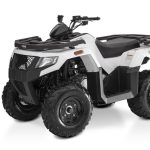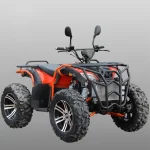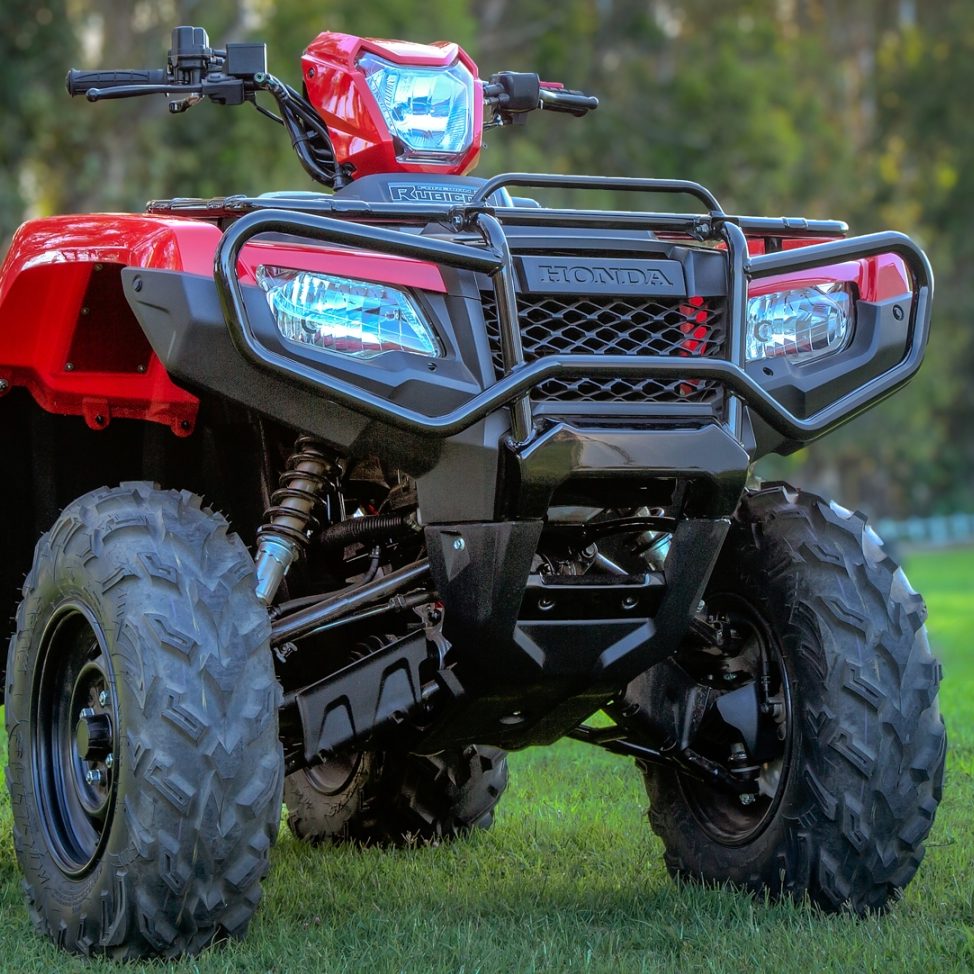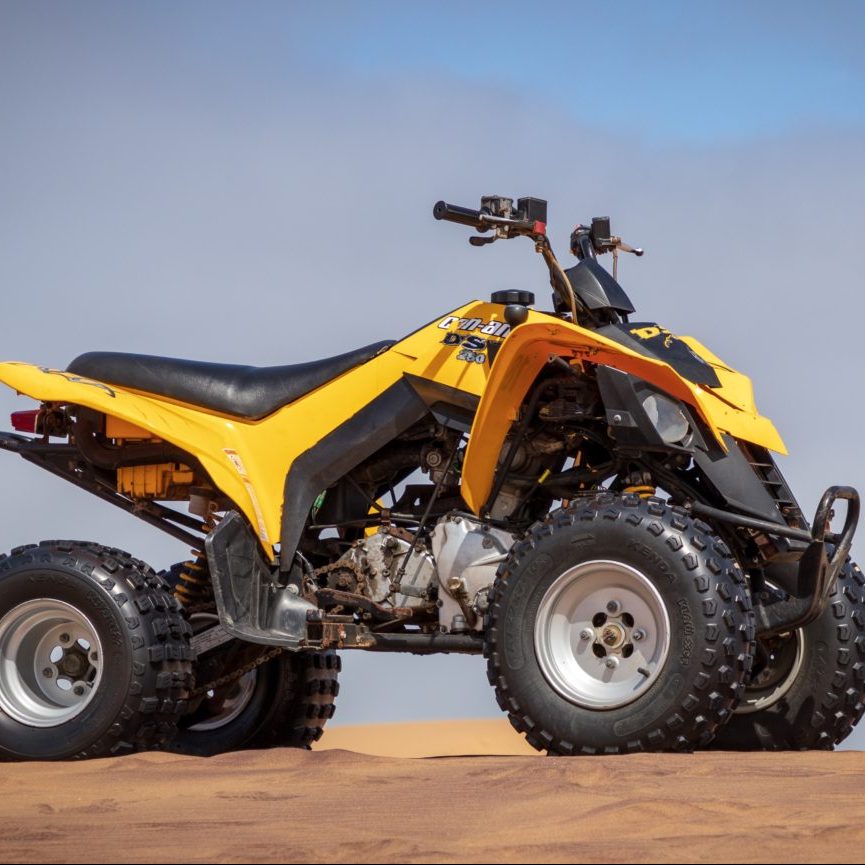Introduction to ATV Tire Size Codes
Navigating the world of ATV tires can get complex. Understanding ATV tire size codes is crucial. These codes help you make informed choices about tires, ensuring the best fit for your ATV.
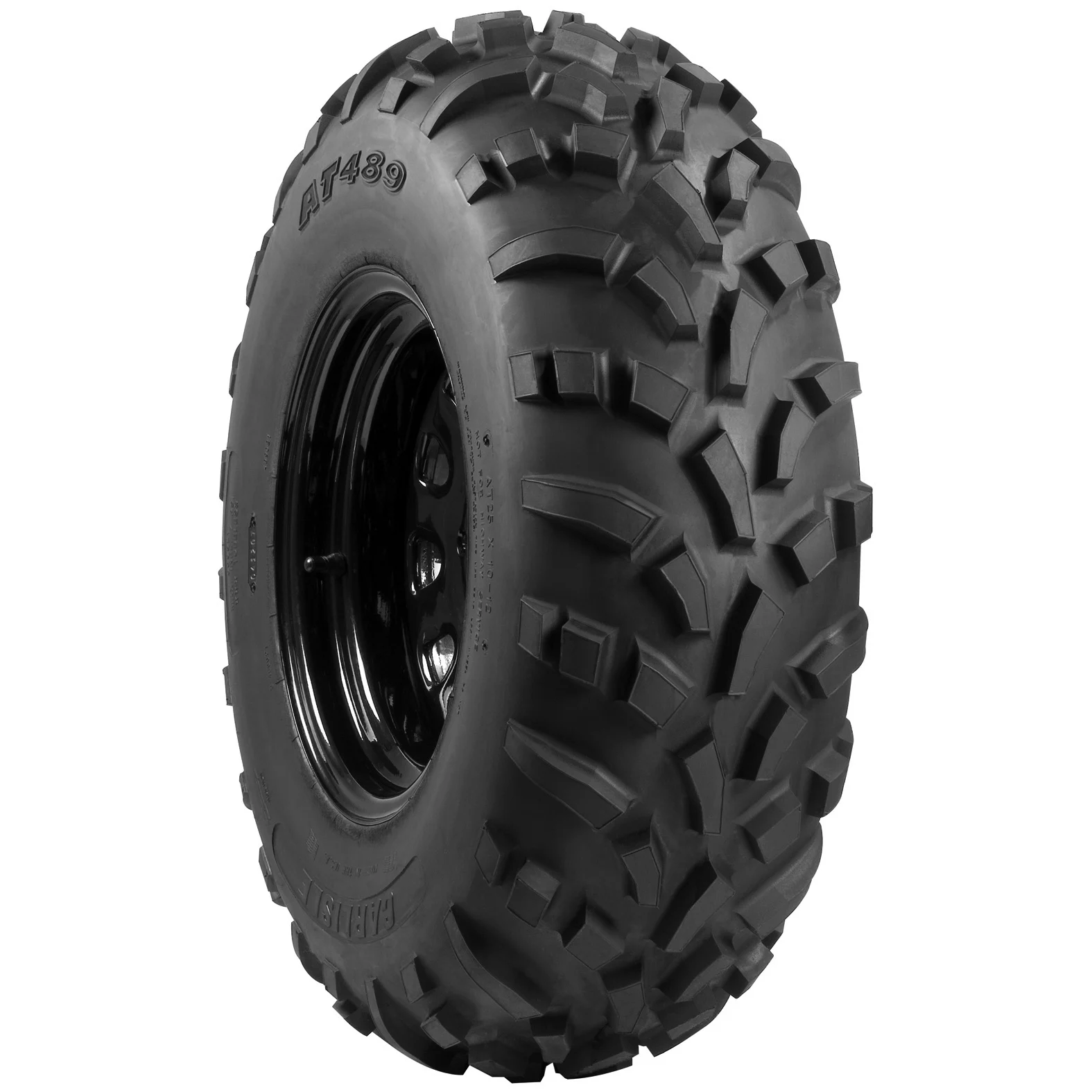
Standard ATV Tire Size Format
Standard ATV tire size codes are straightforward once you know how to read them. They usually have three parts: the tire diameter, tire width, and wheel diameter. All are in inches. For example, 25×10-12 means a 25-inch tall tire, 10 inches wide, designed for a 12-inch wheel. This format is common in the U.S. and influences tire selection greatly.
Metric ATV Tire Size Format
Outside the U.S., tire sizes often use the metric system. This system appears a bit different but shares the same basic elements. You’ll see numbers like 203/80R10, which tell you the width in millimeters, the sidewall height as a percentage of width, and the wheel diameter. The ‘R’ indicates the tire is of radial construction. Knowing both formats is useful for global ATV enthusiasts.
How to Read ATV Tire Sizes
When choosing ATV tires, understanding how to read the sizes is key. Reading the size correctly helps you find the best fit for your vehicle and ensures optimal performance in your chosen terrain.
Decoding Standard ATV Tire Sizes
The standard ATV tire size uses a simple code that includes tire diameter, tire width, and wheel diameter, all in inches. To decode the size, look at the numbers on the sidewall. For instance, ’25×10-12′ translates to a 25-inch tall tire that is 10 inches wide for a 12-inch wheel. This size format is widely used in the U.S. and is essential for the right tire choice.
Decoding Metric ATV Tire Sizes
For the metric system, commonly used outside the U.S., sizes include the width in millimeters followed by the sidewall height as a percentage of width, and the wheel diameter indicated in inches. The ‘R’ represents a radial construction. A size like ‘203/80R10’ means the tire is 203 mm wide, with a sidewall height 80% of the width for a 10-inch wheel. To decode it, multiply or divide the numbers by 25.4 to convert between inches and millimeters when necessary.
By understanding these sizings, you’ll ensure that you select tires that fit your ATV properly and are suitable for the type of riding you do.
Importance of Correct ATV Tire Sizing
Choosing the right ATV tire size is not just a matter of aesthetics. It directly impacts the compatibility and handling of the vehicle, as well as its safety and performance on various terrains. Ensuring that your tires are correctly sized for your ATV will provide smoother, safer rides and enhance your ATV’s efficacy in different environments.
Vehicle Compatibility and Handling
ATV tire sizes must match the specific dimensions specified by the vehicle manufacturer. If the tires are too large or too small, they can affect the ATV’s handling capability. Correctly sized tires provide a perfect balance, ensuring that the ATV operates as it was designed. This balance is crucial not only for vehicle durability but also for rider safety. Mis-sized tires can lead to increased wear and tear, handling difficulties, and even premature vehicle malfunctions.
Safety and Performance Considerations
The right size of ATV tires affects performance, especially on various types of terrain. Larger tires might be beneficial for rough terrain, improving grip and stability. However, without proper adjustments like a lift kit, larger tires can rub against the fenders and restrict movement, which might lead to accidents or mechanical failures. On the other hand, tires that are too small reduce ground clearance, making the ATV more susceptible to underbelly damage. Therefore, understanding ATV tire size meaning is crucial for optimizing both safety and performance. Keeping the ATV tires within manufacturer-recommended sizes ensures the vehicle remains reliable and performs well under all conditions.
Factors to Consider When Choosing ATV Tires
Selecting the right ATV tires plays a crucial role in your vehicle’s performance and safety. To make a wise decision, you need to consider a range of factors that align with your ATV specifications and the terrains you plan to conquer. Below are key factors that should influence your ATV tire choice.
Vehicle Specifications and Tire Fit
When choosing ATV tires, start by checking your vehicle’s specifications. The owner’s manual typically lists the sizes that fit your model. Aligning new tires with these specs ensures they fit without modifications. Remember, tires that are too large may rub against the fenders, while those that are too small decrease ground clearance. Look for tire sizes that maintain your ATV’s performance. If your manual suggests tires that are 25 inches in diameter, stick within a two-inch range to avoid issues. Any bigger, and you may need a lift kit for proper fitting.
Terrain Considerations for Optimal Performance
Your riding terrain influences tire choice. Different terrains like mud, sand, and rocky paths require specific tread patterns and tire widths. For muddy areas, choose tires with deep treads to prevent slipping. Sand riders might prefer wider tires with a flat pattern for better surface contact. Equipping your ATV with the correct tires for your usual terrain enhances performance and safety. When you select tires well-suited for your riding landscape, you’re sure to have an optimized and enjoyable ride.
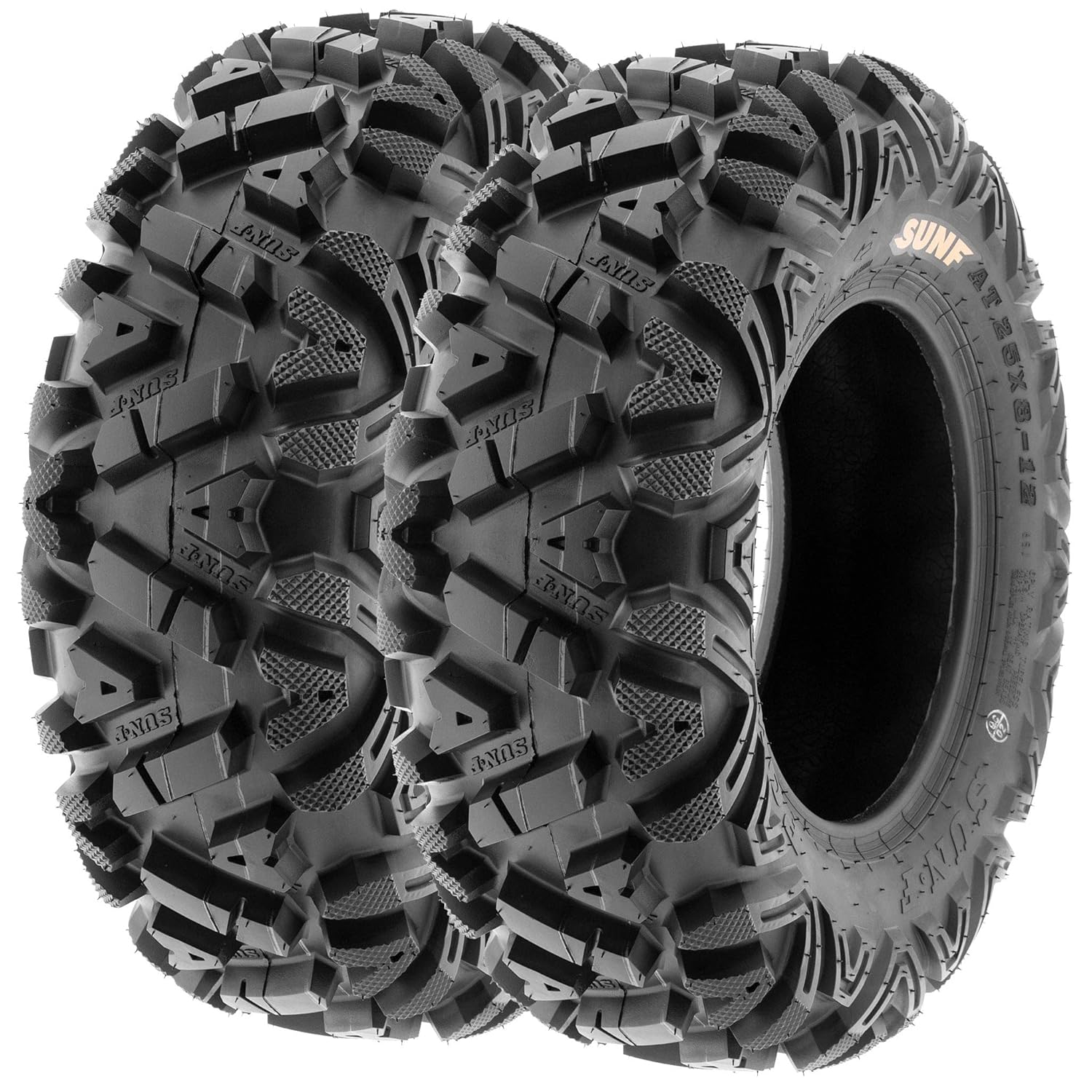 Guidelines for Upgrading ATV Tires
Guidelines for Upgrading ATV Tires
When you’re ready to upgrade your ATV tires, there are important considerations to keep in mind. Upgrading tires can improve performance in specific terrains, but it requires thoughtful selection and, possibly, some modifications to your ATV.
Considering Lift Kits and Modifications
If you’re thinking about installing larger tires on your ATV, a lift kit may be necessary. A lift kit raises your ATV’s body, providing more clearance for bigger tires. This prevents the tires from rubbing against the fenders. Always check your vehicle’s maximum tire size in the owner’s manual. If you go beyond this size, lift kits or other modifications might be needed. Also, remember larger tires can change the ATV’s center of gravity. This may affect handling, so you’ll want to drive cautiously until you get used to the new setup.
Choosing Between Standard and Larger Tire Sizes
Deciding between standard and larger tire sizes depends on your ride’s needs. Standard sizes are great for general use. If you stick to trails and moderate terrains, these will serve you well. But, for more challenging landscapes, like deep mud or uneven rock surfaces, larger tires might give you the edge. They provide better traction and higher ground clearance. When selecting larger sizes, factor in the ATV tire size meaning for your vehicle. Always ensure the tires fit your wheels and that you don’t exceed the size that your ATV can handle without modifications.
Maintenance Tips for ATV Tires
Proper maintenance of your ATV tires is crucial for their longevity and your safety. Here are some essential tips to keep them in top condition.
Keeping Tires within Recommended PSI
Always check the tire pressure before each ride. The right PSI ensures optimal performance and reduces wear. Low pressure can lead to poor handling and increased tread wear. Conversely, too much pressure can make your ride uncomfortable and risky. Refer to your owner’s manual for the correct PSI settings tailored to your ATV model.
Regular Cleaning and Check-ups for Longevity
After each ride, clean your ATV tires thoroughly. Remove any mud, dirt, or debris. This prevents build-up that can damage the tire surface over time. Regularly examine your tires for any signs of wear or damage, such as cuts or punctures. Also, check for uneven wear patterns, which might indicate an issue with tire alignment or suspension. Addressing these issues promptly helps prevent more severe problems and extends the tire’s life. Regular maintenance will ensure your tires are ready for any adventure, keeping you safe and improving your ATV’s performance.
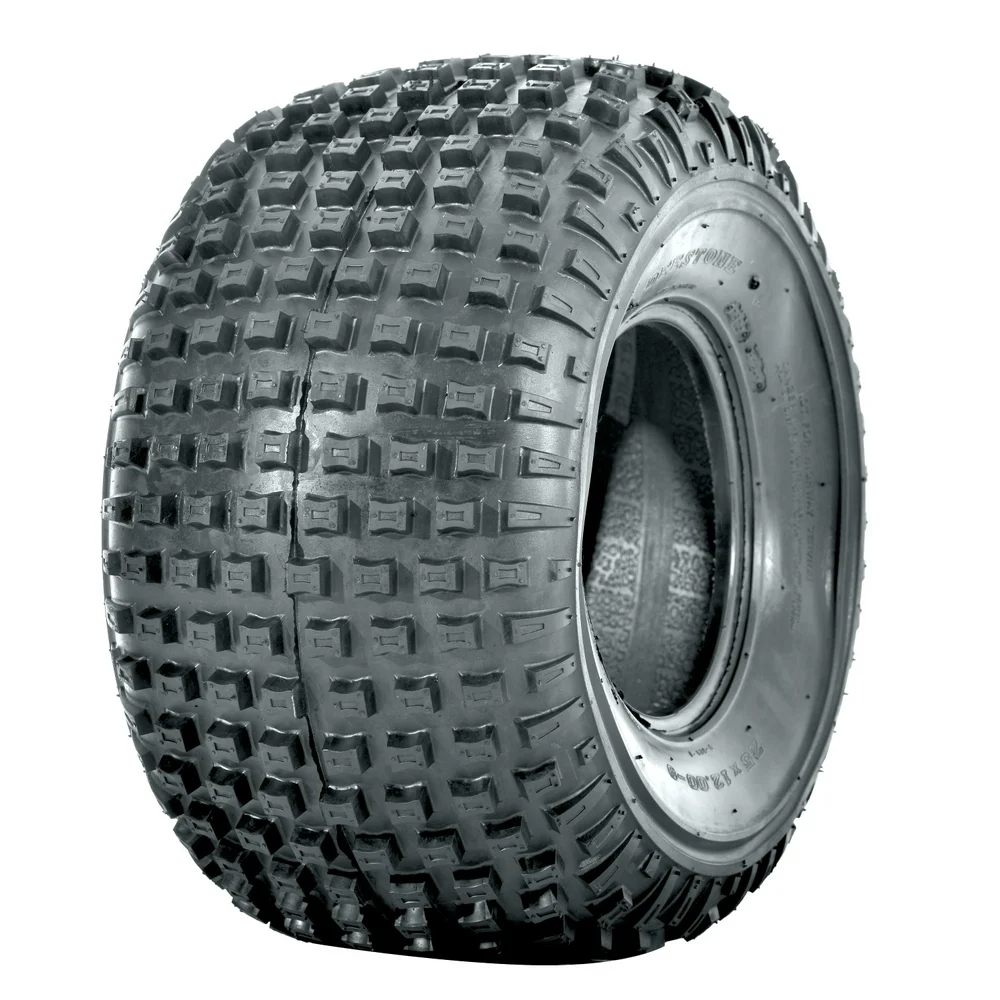 Conclusion
Conclusion
In wrapping up this guide on ATV tire sizes, it’s vital to recognize the importance of proper selection and maintenance. These elements are pivotal for boosting your ATV’s performance and ensuring safety across all terrain types.
Recap of Choosing and Maintaining ATV Tires
Choosing the right ATV tire size is crucial for compatibility and optimal performance. Always consult your ATV’s manual for recommended tire sizes to ensure a perfect fit. For rough terrains, consider larger or specialized tires, keeping in mind potential adjustments like lift kits. Regular maintenance, including keeping tires clean and within the recommended PSI, is essential. This maintains tire integrity and guarantees the best ride experience. In conclusion, understanding the atv tire size meaning and adhering to maintenance guidelines will significantly benefit your ATV’s handling, safety, and longevity.



